We continue our “Definitive Guide to Terraforming” series with a look at another body in our Solar System – the dwarf planet Ceres. Like many moons in the outer Solar System, Ceres is a world of ice and rock, and is the largest body in the Asteroid Belt. Humans beings could one day call it home, but could its surface also be made “Earth-like”?
In the Solar System’s Main Asteroid Belt, there are literally millions of celestial bodies to be found. And while the majority of these range in size from tiny rocks to planetesimals, there are also a handful of bodies that contain a significant percentage of the mass of the entire Asteroid Belt. Of these, the dwarf planet Ceres is the largest, constituting of about a third of the mass of the belt and being the sixth-largest body in the inner Solar System by mass and volume.
In addition to its size, Ceres is the only body in the Asteroid Belt that has achieved hydrostatic equilibrium – a state where an object becomes rounded by the force of its own gravity. On top of all that, it is believed that this dwarf planet has an interior ocean, one which contains about one-tenth of all the water found in the Earth’s oceans. For this reason, the idea of colonizing Ceres someday has some appeal, as well as terraforming.
Ceres also has the distinction of being the only dwarf planet located within the orbit of Neptune. This is especially interesting considering the fact that in terms of size and composition, Ceres is quite similar to several Trans-Neptunian Objects (TNOs) – such as Pluto, Eris, Haumea, Makemake, and several other TNOs that are considered to be potential candidates for dwarf planets status.
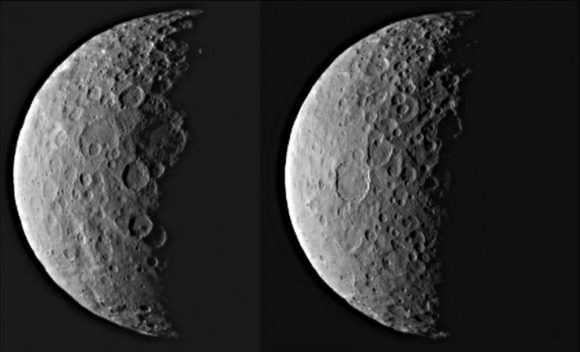
The Dwarf Planet Ceres:
Current estimates place Ceres’ mean radius at 473 km, and its mass at roughly 9.39 × 1020 kg (the equivalent of 0.00015 Earths or 0.0128 Moons). With this mass, Ceres comprises approximately a third of the estimated total mass of the Asteroid Belt (between 2.8 × 1021 and 3.2 × 1021 kg), which in turn is approximately 4% of the mass of the Moon.
The next largest objects are Vesta, Pallas and Hygiea, which have mean diameters of more than 400 km and masses of 2.6 x 1020 kg, 2.11 x 1020 kg, and 8.6 ×1019 kg respectively. The mass of Ceres is large enough to give it a nearly spherical shape, which makes it unique amongst objects and minor planets in the Asteroid Belt.
Ceres follows a slightly inclined and moderately eccentric orbit, ranging from 2.5577 AU (382.6 million km) from the Sun at perihelion and 2.9773 AU (445.4 million km) at aphelion. It has an orbital period of 1,680 Earth days (4.6 years) and takes 0.3781 Earth days (9 hours and 4 minutes) to complete a single rotation on its axis.
Based on its size and density (2.16 g/cm³), Ceres is believed to be differentiated between a rocky core and an icy mantle. Based on evidence provided by the Keck telescope in 2002, the mantle is estimated to be 100 km-thick, and contains up to 200 million cubic km of water, which is equivalent to about 10% of what is in Earth’s oceans, and more water than all the freshwater on Earth.

What’s more, infrared data on the surface also suggests that Ceres may have an ocean beneath its icy mantle. If true, it is possible that this ocean could harbor microbial extraterrestrial life, similar to what has been proposed about Mars, Titan, Europa and Enceladus. It has further been hypothesized that ejecta from Ceres could have sent microbes to Earth in the past.
Other possible surface constituents include iron-rich clay minerals (cronstedtite) and carbonate minerals (dolomite and siderite), which are common minerals in carbonaceous chondrite meteorites. The surface of Ceres is relatively warm, with the maximum temperature estimated to reach approximately 235 K (-38 °C, -36 °F) when the Sun is overhead.
Assuming the presence of sufficient antifreeze (such as ammonia), the water ice would become unstable at this temperature. Therefore, it is possible that Ceres may have a tenuous atmosphere caused by outgassing from water ice on the surface. The detection of significant amounts of hydroxide ions near Ceres’ north pole, which is a product of water vapor dissociation by ultraviolet solar radiation, is another indication of this.
However, it was not until early 2014 that several localized mid-latitude sources of water vapor were detected on Ceres. Possible mechanisms for the vapor release include sublimation from exposed surface ice (as with comets), cryovolcanic eruptions resulting from internal heat, and subsurface pressurization. The limited amount of data thus far suggests that the vaporization is more likely caused by sublimation from exposure to the Sun.
Possible Methods:
As with the moons of Jupiter and Saturn, terraforming Ceres would first require that the surface temperature be raised in order to sublimate its icy outer layer. This could be done by using orbital mirrors to focus sunlight onto the surface, by detonating thermonuclear devices on the surface, or colliding small asteroids harvested from the Main Belt onto the surface.
This would result in Ceres’ crust thawing and turning into a dense, water vapor-rich atmosphere. The orbital mirrors would once again come into play here, where they would be used to trigger photolysis and transform the water vapor into hydrogen and oxygen gas. While the hydrogen gas would be lost to space, the oxygen would remain closer to the surface.
Ammonia could also be harvested locally, since Ceres is believed to have plentiful deposits of ammonia-rich clay soils. With the introduction of specific strains of bacteria into the newly created atmospheres – such as the Nitrosomonas, Pseudomonas and Clostridium species – the sublimated ammonia could be converted into nitrites (NO²-) and then nitrogen gas. The end result would be an ocean world with seas that are 100 km in depth.
Another option would be to employ a process known as “paraterraforming” – where a world is enclosed (in whole or in part) in an artificial shell in order to transform its environment. In the case of Ceres moons, this could involve building large “Shell Worlds” to encase it, keeping the newly-created atmospheres inside long enough to effect long-term changes. Within this shell, Ceres temperature could be increased, UV lights would convert water vapor to oxygen gas, ammonia could be converted to nitrogen, and other elements could be added as needed.
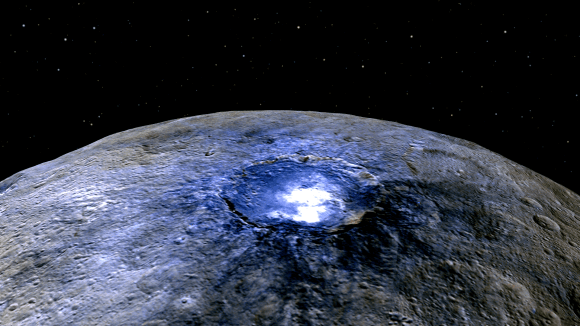
In the same vein, a dome could be built over one or more of Ceres’ craters – particularly the Occator, Kerwan and Yalode craters – where the surface temperature could slowly be raised, and silicates and organic molecules could be introduced to create a terrestrial-like environment. Using water harvested from the surface, this land could be irrigated, oxygen gas could be processed, and nitrogen could be pumped in to act as a buffer gas.
Potential Benefits:
The benefits of colonizing and (para)terraforming Ceres are numerous. For instance, it would take comparatively less energy to sublimate the surface than with the moons of Jupiter or Saturn. Under normal conditions, Ceres’ surface is warm enough (and it is likely there is sufficient ammonia) that its ices are unstable.
Also, Ceres appears from all accounts to be rich in resources, which include water ices and ammonia, and has a surface that is equivalent in total land area to Argentina. Also, the surface receives an estimated 150 W/m2 of solar irradiance at aphelion, one ninth that of Earth. This level of energy is high enough that solar-power facilities could run on its surface.
And being the largest body in the asteroid belt, Ceres could become the main base and transport hub for future asteroid mining infrastructure, allowing mineral resources to be transported to Mars, the Moon, and Earth. Its small escape velocity, combined with large amounts of water ice, means that it also could process rocket fuel, water and oxygen gas on site for ships going through and beyond the Asteroid Belt.
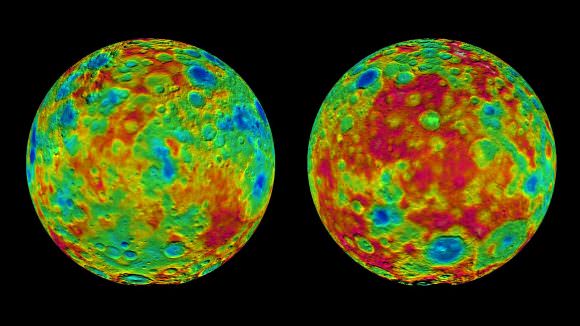
Potential Challenges:
Despite the benefits of a colonized or transformed Ceres, there are also numerous challenges that would need to be addressed first. As always, they can be broken down into the following categories – Distance, Resources and Infrastructure, Hazards and Sustainability. For starters, Ceres and Earth are (on average) approximately 264,411,977 km apart, which is 1.7675 times the distance between the Earth and the Sun (and twice that between Earth and Mars).
Hence, any crewed mission to Ceres – which would involve the transport of both colonists, construction materials, and robotic workers – would take a considerable amount of time and involve a large expenditure in fuel. To put it in perspective, missions to Mars have taken anywhere from 150 to over 300 days, depending on how much fuel was expended. Since Ceres is roughly twice that distance, we can safely say that it would take a minimum of a year for a spacecraft to get there.
However, since these spacecraft would likely be several orders of magnitude heavier than anything previously flown to Mars – i.e. large enough to carry crews, supplies and heavy equipment – they would either need tremendous amounts of thrust to make the journey in the same amount of time, would have to spend much longer in transit, or would need more advanced propulsion systems altogether.
And while NASA currently has plans on the table to build laser-sail spacecraft that could make it Mars in three days times, these plans are not practical as far as colonization or terraforming are concerned. More than likely, advanced drive systems such as Nuclear-Thermal Propulsion (NTP) or a Fusion-drive system would be needed. And while certainly feasible, no such drive systems exist at this time.

Second, the process of building colonies on Ceres’ surface and/or orbital mirrors in orbit would require a huge commitment in material and financial resources. These could be harvested from the Asteroid Belt, but the process would be time-consuming, expensive, and require a large fleet of haulers and robotic miners. There would also need to be a string of bases between Earth and the Asteroid Belt in order to refuel and resupply these missions – i.e. a Lunar base, a permanent base on Mars, and most likely bases in the Asteroid Belt as well.
In terms of hazards, Ceres is not known to have a magnetic field, and would therefore not be shielded from cosmic rays or other forms of radiation. This would necessitate that any colonies on the surface either have significant radiation shielding, or that an orbital shield be put in place to deflect a significant amount of the radiation the planet receives. This latter idea further illustrates the problem of resource expenditure.
The extensive system of craters on Ceres attests to the fact that impactors would be a problem, requiring that they be monitored and redirected away from the planet. The surface gravity on Ceres is also quite low, being roughly 2.8% that on Earth (0.27 m/s2 vs. 9.8 m/s2). This would raise the issue of the long-term effects of near-weightlessness on the human body, which (like exposure to zero-g environments) would most likely involve loss of muscle mass, bone density, and damage to vital organs.
In terms of sustainability, terraforming Ceres presents a major problem. If the dwarf planet’s surface ice were to be sublimated, the result would be an ocean planet with depths of around 100 km. With a mean radius of less than 500 km, this means that about 21% of the planet’s diameter would consist of water. It is unlikely that such a planet (especially one with gravity as low as Ceres’) would be able to retain its oceans for long, and a significant amount of the water would likely be lost to space.
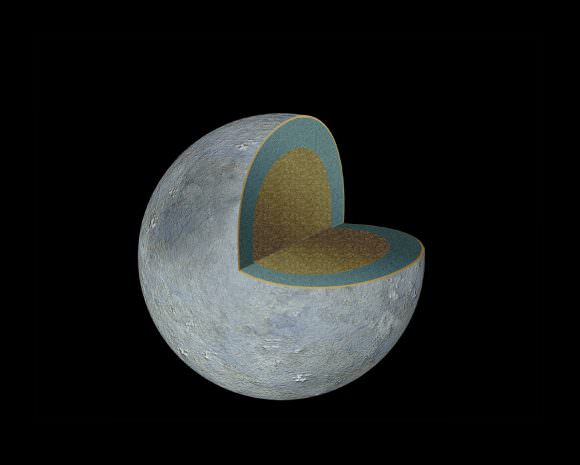
Conclusions:
Under the circumstances, it seems like it would make more sense to colonize or paraterraform Ceres than to subject it to full terraforming. However, any such venture would have to wait upon the creation of a Lunar base, a settlement on Mars, and the development of more advanced propulsion technology. It was also require the creation of a fleet of deep-space ships and an army of construction and mining robots.
However, if and when such a colony were created, the resources of the Asteroid Belt would be at our disposal. Humanity would effectively enter an age of post-scarcity, and would be in a position to mount missions deeper into the Solar System (which could include colonizing the Jovian and Cronian systems, and maybe even the Trans-Neptunian region).
So for the time being, it looks like we’ll just have to be satisfied with developing faster spacecraft, returning to the Moon, and mounting crewed missions to Mars. As they say, baby steps!
We have written many interesting articles on terraforming here at Universe Today. Here’s The Definitive Guide to Terraforming, How Do We Terraforming Mars?, How Do We Terraform Venus?, How Do We Terraform the Moon?, How Do We Terraform Mercury?, How Do We Terraform Jupiter’s Moons?, and How Do We Terraform Saturn’s Moons?
For learn more about Ceres here, here are some articles on the many bright spots captured by the Dawn probe, and what they likely are. And here are some articles on the Asteroid Belt and Why it Isn’t a Planet.
For more information, check out NASA’s Dawn – Ceres and Vesta and Dwarf Planets: Overview.

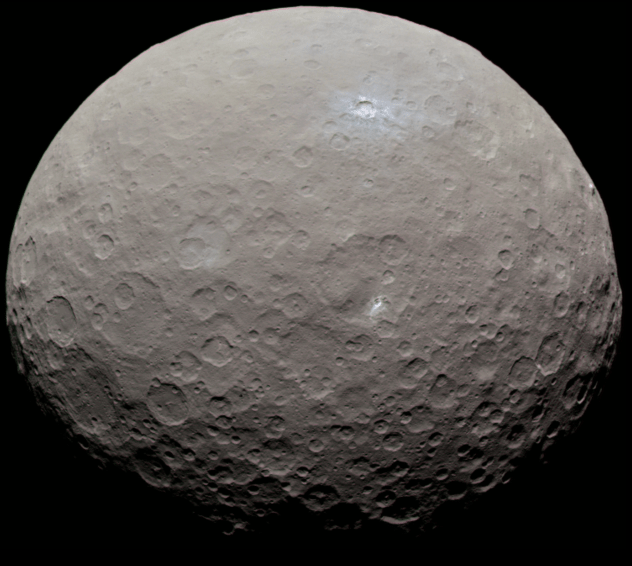
What about the idea described in “The Expanse” – hollowing out Ceres, and increasing its rate of spin to generate artificial gravity (so that “up” would be toward the center of the sphere)? I suspect this approach would require a great deal of reinforcement of the structure of the dwarf planet to keep it from flying apart, but I’d like to see some discussion of the potential for this idea, particularly by people who can do the math to determine how much reinforcement would be necessary to make it a reality.
That really doesn’t work, mainly because the spin does not determine the bodies gravity. Mass and density do. If you were to increase the spin of an object, the force would be pulling people away from the center (aka. centrifugal force).
You misunderstand. I am talking about hollowing out Ceres, so that people would be standing on the inside of the hollowed out sphere, with “down” being the direction that leads out to space, and “up” being toward the core of Ceres. Ceres has very little native gravity, so you would spin it fast enough for the “centrifugal force” (that is, inertia plus centripetal force) to create artificial gravity, making people cling to the inside of the sphere, and completely overwhelming the native gravity of Ceres.
Ah, I see. That would work, as far as bands built around in the inside of the equator. I have yet to read “Leviathan Wakes”, so I’m not clear on how they went about doing this in the story. Did they remove the external ice layer too? Or did they simply dig beneath ice and rock to create the colony?
Before doing it on the Ceres, let’s do it on the Moon !
Speaking of which, did you happen to see our article on terraforming the Moon?
http://www.universetoday.com/121140/could-we-terraform-the-moon/
I would recommend a soletta instead of thermonuclear devices to warm the surface. The latter is just too messy.
There is a much better use for Ceres than attempting to terraform this dwarf planet. I propose to move it into orbit as a moon around Mars, possibly as close as 50,000 kilometers. Over time that could possibly restart Mars’ magnetic field. Oh, about Mars existing moons? Crash them into its poles to evaporate the H20 and CO2 to jumpstart the warming and give it a real atmosphere.